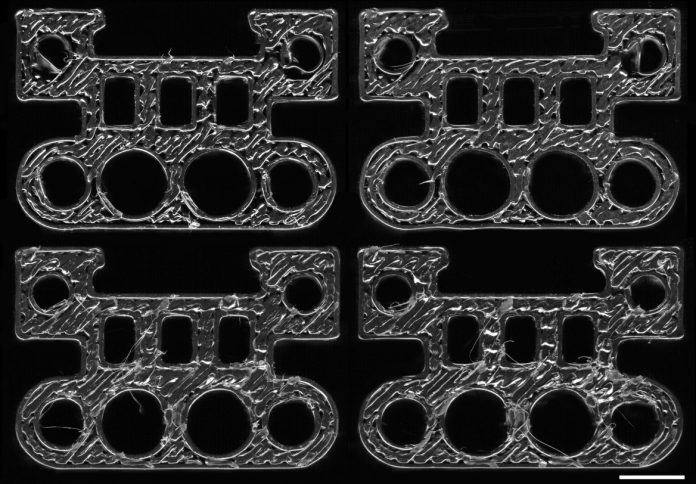
Researchers at the University of Illinois Urbana-Champaign have developed an artificial intelligence system capable of tracing 3D-printed parts back to the exact machine that produced them.
The discovery could provide manufacturers with a new tool to improve supply chain transparency and enforce quality control measures with unprecedented precision, as revealed in a news release.
The research team, led by Bill King, professor of mechanical science and engineering at the university, found that every 3D printer – even machines of the same make and model – imprints subtle, unique identifiers onto the parts it produces.
These identifiers, or “fingerprints,” can now be detected by an AI model trained to recognise machine-specific patterns from photographs of the finished parts.
“We are still amazed that this works: we can print the same part design on two identical machines—same model, same process settings, same material—and each machine leaves a unique fingerprint that the AI model can trace back to the machine,” King said.
“It’s possible to determine exactly where and how something was made. You don’t have to take your supplier’s word on anything.”
The findings were recently published in the Nature partner journal Advanced Manufacturing. According to the researchers, this technology could help manufacturers detect unauthorised changes in production processes, verify the origins of parts, and intervene early when issues arise, potentially preventing costly errors downstream.
Currently, suppliers are typically expected to follow strict guidelines regarding machinery, materials, and procedures, but enforcing these conditions is a major challenge. “Modern supply chains are based on trust,” King said.
“There’s due diligence in the form of audits and site tours at the start of the relationship. But, for most companies, it’s not feasible to continuously monitor their suppliers.”
He added that changes in production, while sometimes harmless, can also result in critical product failures.
“Everyone who works in manufacturing has a story about a supplier that changed something without permission and caused a serious problem,” King noted.
The research originated from a study on the repeatability of 3D printers, when the team noticed a correlation between part tolerances and individual machines.
This observation led them to examine the parts’ surface images, revealing that each machine left a distinct visual signature tied to the fabrication process and materials used.
“These manufacturing fingerprints have been hiding in plain sight,” King said. “There are thousands of 3D printers in the world, and tens of millions of 3D printed parts used in airplanes, automobiles, medical devices, consumer products, and a host of other applications. Each one of these parts has a unique signature that can be detected using AI.”
The AI model was trained on a dataset comprising 9,192 parts made using 21 machines from six companies and four different fabrication processes.
In testing, the system achieved 98% accuracy in identifying a machine from as little as 1 square millimetre of a part’s surface photographed by a smartphone camera.
King said the model could be trained with relatively little data. “Our results suggest that the AI model can make accurate predictions when trained with as few as 10 parts. Using just a few samples from a supplier, it’s possible to verify everything that they deliver after.”
Beyond routine supplier oversight, the team sees broader applications for the technology, including forensic investigations of counterfeit or illicit goods.
According to King, the ability to identify the exact origin of a manufactured part could fundamentally reshape how companies manage and secure their supply chains.



















